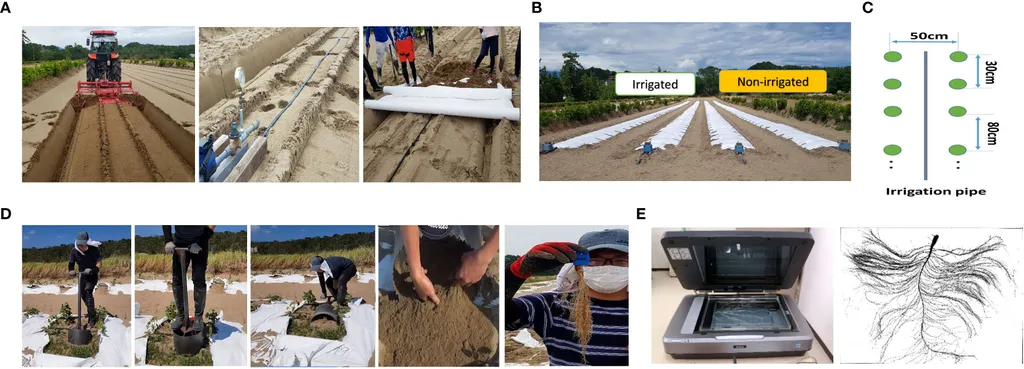In the heart of Brazil’s soybean belt, a groundbreaking study is turning heads and challenging conventional farming practices. Researchers, led by Murilo B. Martins from the Mato Grosso do Sul State University, have uncovered a compelling link between traffic control in agricultural areas and soybean root development. The findings, published in the journal *Engenharia Agrícola* (which translates to *Agricultural Engineering*), could reshape precision agriculture and boost yields in one of the world’s most critical soybean-producing regions.
The study, conducted in Cassilândia, Mato Grosso do Sul, Brazil, compared areas with controlled traffic (CT) and without controlled traffic (WCT) of machinery. The team also explored the impact of different cover crops, including Urochloa (signal grass), pearl millet, a mix of both, and spontaneous species. The results were striking: areas with controlled traffic and Urochloa cover showed significantly greater soybean root length, reaching up to 130 cm in the planting row and 175 cm between rows.
“Root development is crucial for soybean performance and achieving high yields,” Martins explained. “Our study demonstrates that controlled traffic farming, which confines soil compaction to permanent traffic lanes, can promote better root growth. This is a game-changer for farmers looking to maximize their yields while maintaining soil health.”
The implications for the agricultural sector are profound. Soybean is a cornerstone of global agriculture, with Brazil being one of the world’s top producers. Enhanced root development can lead to more robust plants, better nutrient uptake, and ultimately, higher yields. For farmers, this means increased profitability and sustainability. For the energy sector, which relies heavily on soybean oil for biodiesel production, this research could translate into a more reliable and abundant feedstock.
The study’s findings align with the growing trend of precision agriculture, where technology and data-driven practices are used to optimize crop production. By adopting controlled traffic farming, farmers can minimize soil compaction and promote healthier root systems, leading to more resilient and productive crops.
As the world grapples with the challenges of climate change and food security, innovations like controlled traffic farming offer a beacon of hope. “This research is just the beginning,” Martins noted. “We are excited to see how these findings will shape future developments in the field and contribute to more sustainable and productive agricultural practices.”
With the global demand for soybeans on the rise, the insights from this study could not come at a better time. As farmers and agribusinesses look to the future, the lessons from Cassilândia may well pave the way for a new era of agricultural productivity and sustainability.

